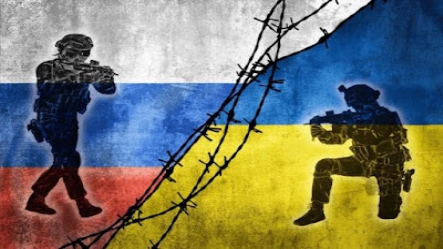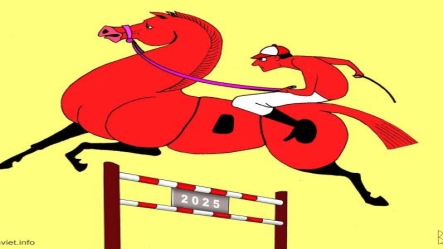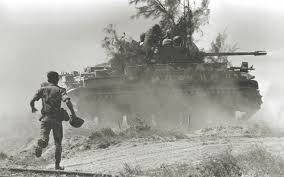Kinh Đời
Một hạm trưởng người Canada gốc Việt về hưu

Halifax (Theo báo the Chronicle Herald): Vào cuối tháng 11 năm nay, ông Cảnh Nguyễn, một hạm trưởng của lực lượng cận duyên của hải quân Canada, đã về hưu sau hơn 30 năm phục vụ trong ngành hải quân.
Ông Cảnh Nguyễn, nguyên là một sĩ quan của hải quân Việt Nam Cộng Hòa, đã tỵ nạn đến Halifax vào năm 1975.
Trong một cuộc phỏng vấn mới đây của báo Chronicle Herald, ông Cảnh Nguyễn năm nay 65 tuổi, đã kể cho phóng viên báo này, về cuộc sống gian truân của ông từ năm 1954, khi gia đình ông phải di cư từ miến Bắc vào miền Nam.
Năm 1968 khi đang học đại học, thì có lệnh đôn quân, sau trận tấn công của việt cộng vào dịp Tết Mậu Thân. Ông gia nhập hải quân, và được gửi qua huấn luyện ở Hoa Kỳ một thời gian.
Năm 1975, ông di tản theo đoàn người tỵ nạn và ở tại trại tỵ nạn Indidan Town Gap, thành phố Harisburgh, tiểu bang Pensylvania một thời gian, trước khi được chính quyền Canada bảo trợ qua Canada. Ông làm việc cho công ty chuyên chở dầu Irving Oil ba năm rưỡi, trước khi được nhận vào làm cho lực lượng hải quân cận duyên (coast guard), và đã đi chu du qua nhiều nước như Mễ Tây Cơ, vùng đảo Caribean, Âu Châu và đã từng thấy gấu trắng khi tàu lên miến Bắc cực.
Sau hơn 30 năm làm việc cho coast guard, ông Cảnh Nguyễn về hưu với chức hạm trưởng ( the commanding officer) của lực lượng hải quân The Canadian Forces Auxiliary Vessel (CFAV) Quest.
- See more at: http://thoibao.com/2013/12/02/
______________________
NOVA SCOTIA AZ: Nguyen started over in NS - The Chronicle Herald
NOVA SCOTIA A-Z: Nguyen started over in N.S.

Canh Nguyen went through hell in his native Vietnam before arriving in Nova Scotia with next to nothing.
As an officer in the South Vietnamese navy, he came horribly close several times to losing his life at sea but eventually managed to make a good living on the water in Canada.
In an interview at his Bedford home, the 65-year-old, twice-married father of three spoke to The Chronicle Herald about his childhood, his horrific wartime experiences and the series of life-changing decisions that not only kept him alive but brought him to Halifax.
Canh’s early years were spent in the northern city of Hanoi and his grandfather was involved in politics, “almost like the premier here,” he said.
Things changed when Canh reached age six in 1954. Communist forces took over the north and Vietnam was divided in two. Being wealthy made his family more of a target and they left the city to go into hiding.
His father tried to find a way to move his family to South Vietnam and only visited their home late at night.
“If they catch my father, he’s done, they’re going to kill him,” Canh said.
An uncle who worked in government made fake IDs for the family and they made their way to the port city of Haiphong, where big American tank carriers were ferrying people to South Vietnam. His family crammed on board with thousands of others for the eight-day trip.
They relocated to a rural area outside the capital of Saigon until another family member helped them set up a food supply business in that southern city, which would be their relatively peaceful home for more than 10 years.
Canh did well in school. He passed the stringent exams needed to get into university and started to study the sciences.
“I hoped someday I’d be a medical doctor,” he said. “I was doing well.”
During this time, communists from North Vietnam were moving to the South, often with the help of sympathetic pro-communist forces in the South known as the Viet Cong.
In early 1968, the communist forces launched the infamous Tet offensive. Canh said there was a lot of death and burning buildings, and young men in the South started getting drafted into the military.
Educated students like him had a better chance of getting into the air force or navy, something he preferred over being an army soldier.
He wanted to be a helicopter pilot.
“I passed the test but I was about four pounds underweight and they wouldn’t take me,” he said.
He only weighed about 90 pounds then. He said the air force offered to accept him as a helicopter pilot if he paid a bribe equal to about four months’ salary. His father said he could have the money, but Canh disapproved and refused to pay.
The navy accepted him instead.
“I wasn’t happy, but at least I didn’t have to join the army, (which was) a death sentence, almost.”
He went to the naval academy and was one of hundreds chosen for officer school, which meant a six-month training trip to Newport, R.I.
“I went there in February 1970,” he said.
His most vivid memories involved the friendliness of the Americans and the bitter cold.
“We had to stand in line. Even though we had heavy overcoats, quite a few of them were standing up there and they just fainted because it was so cold. They’d just drop.”
On his return to Vietnam, Canh was posted to PCF (patrol fast craft) vessels, which were also called swift boats. The small coastal defence boats patrolled the waters looking for guerrilla soldiers and their supply routes.
It was very dangerous work and almost cost Canh his life twice.
One day in mid-May 1972, his PCF was one of six vessels patrolling a small river and he was perched in his favourite spot.
He loved sitting in the quiet on the roof of the small cabins on these boats.
“I’d feel so peaceful. I’d have a cup of coffee.”
The boat hit a mine and exploded.
“Somehow I landed on the riverbank,” he said.
Canh figures he was unconscious for more than an hour because he woke up alone after dark. He had a lot of serious aches and lacerations but realized he had to get to a compound for local forces as quickly as he could.
“I knew that I had to get there before the sun came up because (the Viet Cong) would find me and they were going to kill me.”
When Canh made it to the compound, the soldiers there called his base and he learned that his five fellow crew members had died.
He later recovered and was posted to do the same dangerous patrol work.
Once again, he was sitting in the same area atop one of the boats having lunch with another crewman when his friend was killed before his eyes.
“We were just talking and suddenly a gun from somewhere hit him right in the head.”
Canh got the boat out of that area, and he eventually took a posting in the extreme south of Vietnam.
The war was concluding at the end of April 1975 and his last job was to help ferry 3,500 Vietnamese people to American cargo ships. These people had worked closely with the Americans and had to be whisked to safety in Guam.
Canh was in charge of six vessels doing the ferrying. After the last trip, they were making the six-hour jaunt back to land.
“I was listening to the radio. They were telling you how to surrender to the new government.”
The instructions were to head to the nearest port and drop anchor. Sailors were to strip to their shorts, hoist a white flag and stand on deck with their hands up.
“When I heard that, it scared the hell out of me.”
Canh called the other ships together and told them he wasn’t going to surrender. After some discussion, three vessels went back to the American cargo ships and the rest surrendered to the new government.
Canh said the men who surrendered, many of them his friends, were placed in re-education centres and tortured.
The Americans took him to Guam for four weeks and then to Harrisburg, Pa. He was told other countries were willing to provide homes to the Vietnamese, and he was given the chance to apply to go to England, Australia and Canada.
After about four weeks in Harrisburg, a Canadian official interviewed him. About a week later, he was in Montreal.
But he didn’t take well to his new surroundings. He said he had trouble finding work and affordable housing on his allowance, and he heard the same from other Vietnamese who’d been there longer.
Canh asked if he could join a friend who’d gone to Halifax a month earlier. He was eventually given $90 to make the trip.
A $65 train ride got him to Saint John, N.B., where he took a cab to the ferry terminal and got on the boat to Digby. A bus brought him to Halifax.
“I only had about five dollars,” he said.
He soon set out to look for work and found the employment agency, then known as Manpower, to be much better than the one in Montreal. He was put up in a downtown hotel for a month and was given taxi rides to a nearby Chinese restaurant every night.
“It was so friendly, so nice and so helpful,” Canh said.
Before long, he was in nautical school getting his papers in order. He also worked as a kitchen helper at the China Town restaurant and as a bartender in a basement bar called Flanagan’s in the old Holiday Inn (now the Atlantica Hotel) on Robie Street.
He got work on an Irving oil tanker and stayed 31/2 years.
Then he took a civilian job with the Defence Department, again finding that he liked quiet times on board his ship. Among other destinations, he sailed to Mexico, the Caribbean and Europe, and he saw polar bears in the Canadian Arctic.
After more than 30 years with the department, Canh will soon retire as the commanding officer of the Canadian Forces Auxiliary Vessel (CFAV) Quest.
He lost a brother in the Vietnam War and sponsored nine brothers and sisters to come to Canada. They are all in Toronto and successful, he said.
Adapting to life in Nova Scotia wasn’t difficult, Canh said.
“This is a free society in a free country. I love it. Over here, you work hard (and) you get what you want.”
His favourite place in Nova Scotia is Mahone Bay, and he prefers to watch baseball over hockey, something he attributes to seeing American soldiers play ball in Vietnam.
But he’s never been able to forget the horrors of war.
“I see it in front of my eyes. Every few days it happens.”
Still, Canh feels lucky for all he has.
“I feel like I’m more Canadian than Vietnamese,” he said.
Canh’s retirement plans include some volunteering and maybe spending his winters in the warmth of his original homeland.
He doesn’t plan to venture off dry land much, though.
“I spent too many years at sea,” he said. “I think I’m done.”
darsenault@herald.ca
_____________________________
Canadian Forces Auxiliary Vessel - QUEST - Facilities
  |
Facilities
Specialized Facilities
Research and Development at Sea![]()
DRDC Atlantic Fact Sheet
Canadian Forces Auxiliary Vessel “QUEST”

“CFAV Quest” in Newfoundland.
The research, development, and testing of the systems needed by the Canadian Navy to maintain a state of readiness for maritime warfare often requires that the laboratory be transported to the field, so that the work can be performed under "real world" conditions.
To this end, the Defence R&D Canada – Atlantic employs the Canadian Forces Auxiliary Vessel QUEST. Maintained by the Navy and manned by Maritime Forces Atlantic Auxiliary seamen, QUEST conducts 7 to 10 trials per year, spending up to 160 days at sea. These trials encompass a wide range of R&D activity, from research on the acoustic properties of the ocean to experiments on ship signatures and safety. As well, the evaluation of prototype acoustic detection systems is often the first step in the process leading to procurement of new systems for the Navy.
This broad range of R&D activities requires a capable and versatile vessel, thus QUEST was designed with spacious laboratories, large working deck areas, and very capable marine cranes and specialized equipment handling systems. The vessel was designed with a large margin of stability and this, combined with its roll-stabilization system and constant displacement systems, makes QUEST a safe and stable platform from which to carry out experiments, even in heavy seas.
Of particular note are the acoustic quieting features of the vessel, which reduce the ship’s radiated noise to virtually undetectable levels when the vessel is configured in its "quiet state". QUEST has conducted research in support of other Government Departments, Universities, and Canadian Industry, where joint research is mutually beneficial. QUEST has participated in Canadian and NATO naval exercises requiring the operational evaluation of prototype equipment.
General
Designer: • Canadian Department of National Defence
Builder: • Burrard Shipbuilding & Drydock Ltd., Vancouver, Canada (1969)
Construction: • General Purpose Research Vessel (Steel), Lloyd’s Class 100A1 Ice Class1
Mid Life Refit: • Friede Goldman Newfoundland (FGN), Newfoundland, Canada (1997/99)
Ship Characteristics
Dimensions: • 76m x 12.6m x 4.8m (length x beam x draft)
Displacement: • 2130 tonnes standard; 2200 tonnes full load
Main Propulsion: • Diesel electric, twin shaft, twin rudder, 2 – 10 cyl. Fairbanks-Morse 38D8 diesels driving 2 – GE electric motors
Auxiliary Propulsion and Electrical: • 1 – 750kw gas turbine driving 2 – 500kw generators in tandem Propulsion providing AC for ship service and/or DC for propulsion and a 150kw and Electrical: emergency diesel generator
Steering: • Integrated Steering & Autopilot RC Marine
Other: • Retractable bow thruster, ship roll stabilization system and water displacement fuel tanks
Max Speed: • 15 knots
Endurance: • 10, 000 nm @ 12 knots, 35 days
Complement
• 10 officers, 14 crew, up to 21 scientific and trials personnel
Electronics
Radar: • Racal-Decca Bridgemaster 2, "X" band and "S" band
Communication and Navigation: • Full suite of modern navigation and communication and Navigation equipment
Special:
• Echo sounders
• Sub-bottom profile
• Current profiler
• Directional wave measurement system
• Wave height meter
• Environmental sensor
• Bathymetry
• Expendable bathythermograph launcher
• Radio direction finder
• Underwater telephone
Unique Features
Stabilized Electrical Power: • In combination with fitted heavy batteries, the 125 kva uninterrupted power supply (UPS) provides power to scientific instrumentation in the event of shipboard power interruption, and for quiet state operations.
Acoustic: • Main propulsion diesels raft mounted and acoustically hooded with raft de-coupled from the hull. The 750kw gas turbine, for quiet state operations, is located in superstructure (02deck) and is also acoustically isolated. The hull and sea-bays are coated internally with thick visco-elastic acoustic and de-coupler tiles. Internal divisions consist of special transmission loss bulkheads and acoustic ceilings, ventilation and piping systems, designed to minimize noise, and the steering hydraulics noise is suppressed. Unique, 5-bladed propellers provide low noise performance.
Laboratories and Workshops: • Spacious "wet" and "dry" laboratory spaces capable of holding and Workshops: up to 53 "racks" of scientific instrumentation, plus well equipped electronics and mechanical workshops. All scientific areas and workshops are linked to a local area computer network.
For more information
Manager/Technical Services
Phone: (902) 426-3100 ext. 143
E-mail: atl.m.ts@drdc-rddc.gc.ca
Defence R&D Canada – Atlantic
P.O. Box 1012, Dartmouth, Nova Scotia B2Y 3Z7
Phone: (902) 426-3100 Fax: (902) 426-9654
www.atlantic.drdc-rddc.gc.ca
Fact Sheet No. TS0102
© DRDC Atlantic 2002
Nam Yết chuyển
Bàn ra tán vào (0)
Các tin đã đăng
- "Thống Kê Của Cao Ủy Tị Nạn LHQ Về Người Việt Tị Nạn CS" - by Trần Văn Giang (ghi lại).
- Lời Của Người Khôn Ngoan - by Trần Văn Giang (ghi lại).
- "Im Lặng Là Vàng" - by Trần Văn Giang (ghi lại).
- Chuyện “Phố Vải” - by Phạm Thành Nhân / Trần Văn Giang (ghi lại).
- "Tục Đốt Vàng Mã" - By HT Tố Liên / Trần Văn Giang (ghi lại).
Một hạm trưởng người Canada gốc Việt về hưu

Halifax (Theo báo the Chronicle Herald): Vào cuối tháng 11 năm nay, ông Cảnh Nguyễn, một hạm trưởng của lực lượng cận duyên của hải quân Canada, đã về hưu sau hơn 30 năm phục vụ trong ngành hải quân.
Ông Cảnh Nguyễn, nguyên là một sĩ quan của hải quân Việt Nam Cộng Hòa, đã tỵ nạn đến Halifax vào năm 1975.
Trong một cuộc phỏng vấn mới đây của báo Chronicle Herald, ông Cảnh Nguyễn năm nay 65 tuổi, đã kể cho phóng viên báo này, về cuộc sống gian truân của ông từ năm 1954, khi gia đình ông phải di cư từ miến Bắc vào miền Nam.
Năm 1968 khi đang học đại học, thì có lệnh đôn quân, sau trận tấn công của việt cộng vào dịp Tết Mậu Thân. Ông gia nhập hải quân, và được gửi qua huấn luyện ở Hoa Kỳ một thời gian.
Năm 1975, ông di tản theo đoàn người tỵ nạn và ở tại trại tỵ nạn Indidan Town Gap, thành phố Harisburgh, tiểu bang Pensylvania một thời gian, trước khi được chính quyền Canada bảo trợ qua Canada. Ông làm việc cho công ty chuyên chở dầu Irving Oil ba năm rưỡi, trước khi được nhận vào làm cho lực lượng hải quân cận duyên (coast guard), và đã đi chu du qua nhiều nước như Mễ Tây Cơ, vùng đảo Caribean, Âu Châu và đã từng thấy gấu trắng khi tàu lên miến Bắc cực.
Sau hơn 30 năm làm việc cho coast guard, ông Cảnh Nguyễn về hưu với chức hạm trưởng ( the commanding officer) của lực lượng hải quân The Canadian Forces Auxiliary Vessel (CFAV) Quest.
- See more at: http://thoibao.com/2013/12/02/
______________________
NOVA SCOTIA AZ: Nguyen started over in NS - The Chronicle Herald
NOVA SCOTIA A-Z: Nguyen started over in N.S.

Canh Nguyen went through hell in his native Vietnam before arriving in Nova Scotia with next to nothing.
As an officer in the South Vietnamese navy, he came horribly close several times to losing his life at sea but eventually managed to make a good living on the water in Canada.
In an interview at his Bedford home, the 65-year-old, twice-married father of three spoke to The Chronicle Herald about his childhood, his horrific wartime experiences and the series of life-changing decisions that not only kept him alive but brought him to Halifax.
Canh’s early years were spent in the northern city of Hanoi and his grandfather was involved in politics, “almost like the premier here,” he said.
Things changed when Canh reached age six in 1954. Communist forces took over the north and Vietnam was divided in two. Being wealthy made his family more of a target and they left the city to go into hiding.
His father tried to find a way to move his family to South Vietnam and only visited their home late at night.
“If they catch my father, he’s done, they’re going to kill him,” Canh said.
An uncle who worked in government made fake IDs for the family and they made their way to the port city of Haiphong, where big American tank carriers were ferrying people to South Vietnam. His family crammed on board with thousands of others for the eight-day trip.
They relocated to a rural area outside the capital of Saigon until another family member helped them set up a food supply business in that southern city, which would be their relatively peaceful home for more than 10 years.
Canh did well in school. He passed the stringent exams needed to get into university and started to study the sciences.
“I hoped someday I’d be a medical doctor,” he said. “I was doing well.”
During this time, communists from North Vietnam were moving to the South, often with the help of sympathetic pro-communist forces in the South known as the Viet Cong.
In early 1968, the communist forces launched the infamous Tet offensive. Canh said there was a lot of death and burning buildings, and young men in the South started getting drafted into the military.
Educated students like him had a better chance of getting into the air force or navy, something he preferred over being an army soldier.
He wanted to be a helicopter pilot.
“I passed the test but I was about four pounds underweight and they wouldn’t take me,” he said.
He only weighed about 90 pounds then. He said the air force offered to accept him as a helicopter pilot if he paid a bribe equal to about four months’ salary. His father said he could have the money, but Canh disapproved and refused to pay.
The navy accepted him instead.
“I wasn’t happy, but at least I didn’t have to join the army, (which was) a death sentence, almost.”
He went to the naval academy and was one of hundreds chosen for officer school, which meant a six-month training trip to Newport, R.I.
“I went there in February 1970,” he said.
His most vivid memories involved the friendliness of the Americans and the bitter cold.
“We had to stand in line. Even though we had heavy overcoats, quite a few of them were standing up there and they just fainted because it was so cold. They’d just drop.”
On his return to Vietnam, Canh was posted to PCF (patrol fast craft) vessels, which were also called swift boats. The small coastal defence boats patrolled the waters looking for guerrilla soldiers and their supply routes.
It was very dangerous work and almost cost Canh his life twice.
One day in mid-May 1972, his PCF was one of six vessels patrolling a small river and he was perched in his favourite spot.
He loved sitting in the quiet on the roof of the small cabins on these boats.
“I’d feel so peaceful. I’d have a cup of coffee.”
The boat hit a mine and exploded.
“Somehow I landed on the riverbank,” he said.
Canh figures he was unconscious for more than an hour because he woke up alone after dark. He had a lot of serious aches and lacerations but realized he had to get to a compound for local forces as quickly as he could.
“I knew that I had to get there before the sun came up because (the Viet Cong) would find me and they were going to kill me.”
When Canh made it to the compound, the soldiers there called his base and he learned that his five fellow crew members had died.
He later recovered and was posted to do the same dangerous patrol work.
Once again, he was sitting in the same area atop one of the boats having lunch with another crewman when his friend was killed before his eyes.
“We were just talking and suddenly a gun from somewhere hit him right in the head.”
Canh got the boat out of that area, and he eventually took a posting in the extreme south of Vietnam.
The war was concluding at the end of April 1975 and his last job was to help ferry 3,500 Vietnamese people to American cargo ships. These people had worked closely with the Americans and had to be whisked to safety in Guam.
Canh was in charge of six vessels doing the ferrying. After the last trip, they were making the six-hour jaunt back to land.
“I was listening to the radio. They were telling you how to surrender to the new government.”
The instructions were to head to the nearest port and drop anchor. Sailors were to strip to their shorts, hoist a white flag and stand on deck with their hands up.
“When I heard that, it scared the hell out of me.”
Canh called the other ships together and told them he wasn’t going to surrender. After some discussion, three vessels went back to the American cargo ships and the rest surrendered to the new government.
Canh said the men who surrendered, many of them his friends, were placed in re-education centres and tortured.
The Americans took him to Guam for four weeks and then to Harrisburg, Pa. He was told other countries were willing to provide homes to the Vietnamese, and he was given the chance to apply to go to England, Australia and Canada.
After about four weeks in Harrisburg, a Canadian official interviewed him. About a week later, he was in Montreal.
But he didn’t take well to his new surroundings. He said he had trouble finding work and affordable housing on his allowance, and he heard the same from other Vietnamese who’d been there longer.
Canh asked if he could join a friend who’d gone to Halifax a month earlier. He was eventually given $90 to make the trip.
A $65 train ride got him to Saint John, N.B., where he took a cab to the ferry terminal and got on the boat to Digby. A bus brought him to Halifax.
“I only had about five dollars,” he said.
He soon set out to look for work and found the employment agency, then known as Manpower, to be much better than the one in Montreal. He was put up in a downtown hotel for a month and was given taxi rides to a nearby Chinese restaurant every night.
“It was so friendly, so nice and so helpful,” Canh said.
Before long, he was in nautical school getting his papers in order. He also worked as a kitchen helper at the China Town restaurant and as a bartender in a basement bar called Flanagan’s in the old Holiday Inn (now the Atlantica Hotel) on Robie Street.
He got work on an Irving oil tanker and stayed 31/2 years.
Then he took a civilian job with the Defence Department, again finding that he liked quiet times on board his ship. Among other destinations, he sailed to Mexico, the Caribbean and Europe, and he saw polar bears in the Canadian Arctic.
After more than 30 years with the department, Canh will soon retire as the commanding officer of the Canadian Forces Auxiliary Vessel (CFAV) Quest.
He lost a brother in the Vietnam War and sponsored nine brothers and sisters to come to Canada. They are all in Toronto and successful, he said.
Adapting to life in Nova Scotia wasn’t difficult, Canh said.
“This is a free society in a free country. I love it. Over here, you work hard (and) you get what you want.”
His favourite place in Nova Scotia is Mahone Bay, and he prefers to watch baseball over hockey, something he attributes to seeing American soldiers play ball in Vietnam.
But he’s never been able to forget the horrors of war.
“I see it in front of my eyes. Every few days it happens.”
Still, Canh feels lucky for all he has.
“I feel like I’m more Canadian than Vietnamese,” he said.
Canh’s retirement plans include some volunteering and maybe spending his winters in the warmth of his original homeland.
He doesn’t plan to venture off dry land much, though.
“I spent too many years at sea,” he said. “I think I’m done.”
darsenault@herald.ca
_____________________________
Canadian Forces Auxiliary Vessel - QUEST - Facilities
  |
Facilities
Specialized Facilities
Research and Development at Sea![]()
DRDC Atlantic Fact Sheet
Canadian Forces Auxiliary Vessel “QUEST”

“CFAV Quest” in Newfoundland.
The research, development, and testing of the systems needed by the Canadian Navy to maintain a state of readiness for maritime warfare often requires that the laboratory be transported to the field, so that the work can be performed under "real world" conditions.
To this end, the Defence R&D Canada – Atlantic employs the Canadian Forces Auxiliary Vessel QUEST. Maintained by the Navy and manned by Maritime Forces Atlantic Auxiliary seamen, QUEST conducts 7 to 10 trials per year, spending up to 160 days at sea. These trials encompass a wide range of R&D activity, from research on the acoustic properties of the ocean to experiments on ship signatures and safety. As well, the evaluation of prototype acoustic detection systems is often the first step in the process leading to procurement of new systems for the Navy.
This broad range of R&D activities requires a capable and versatile vessel, thus QUEST was designed with spacious laboratories, large working deck areas, and very capable marine cranes and specialized equipment handling systems. The vessel was designed with a large margin of stability and this, combined with its roll-stabilization system and constant displacement systems, makes QUEST a safe and stable platform from which to carry out experiments, even in heavy seas.
Of particular note are the acoustic quieting features of the vessel, which reduce the ship’s radiated noise to virtually undetectable levels when the vessel is configured in its "quiet state". QUEST has conducted research in support of other Government Departments, Universities, and Canadian Industry, where joint research is mutually beneficial. QUEST has participated in Canadian and NATO naval exercises requiring the operational evaluation of prototype equipment.
General
Designer: • Canadian Department of National Defence
Builder: • Burrard Shipbuilding & Drydock Ltd., Vancouver, Canada (1969)
Construction: • General Purpose Research Vessel (Steel), Lloyd’s Class 100A1 Ice Class1
Mid Life Refit: • Friede Goldman Newfoundland (FGN), Newfoundland, Canada (1997/99)
Ship Characteristics
Dimensions: • 76m x 12.6m x 4.8m (length x beam x draft)
Displacement: • 2130 tonnes standard; 2200 tonnes full load
Main Propulsion: • Diesel electric, twin shaft, twin rudder, 2 – 10 cyl. Fairbanks-Morse 38D8 diesels driving 2 – GE electric motors
Auxiliary Propulsion and Electrical: • 1 – 750kw gas turbine driving 2 – 500kw generators in tandem Propulsion providing AC for ship service and/or DC for propulsion and a 150kw and Electrical: emergency diesel generator
Steering: • Integrated Steering & Autopilot RC Marine
Other: • Retractable bow thruster, ship roll stabilization system and water displacement fuel tanks
Max Speed: • 15 knots
Endurance: • 10, 000 nm @ 12 knots, 35 days
Complement
• 10 officers, 14 crew, up to 21 scientific and trials personnel
Electronics
Radar: • Racal-Decca Bridgemaster 2, "X" band and "S" band
Communication and Navigation: • Full suite of modern navigation and communication and Navigation equipment
Special:
• Echo sounders
• Sub-bottom profile
• Current profiler
• Directional wave measurement system
• Wave height meter
• Environmental sensor
• Bathymetry
• Expendable bathythermograph launcher
• Radio direction finder
• Underwater telephone
Unique Features
Stabilized Electrical Power: • In combination with fitted heavy batteries, the 125 kva uninterrupted power supply (UPS) provides power to scientific instrumentation in the event of shipboard power interruption, and for quiet state operations.
Acoustic: • Main propulsion diesels raft mounted and acoustically hooded with raft de-coupled from the hull. The 750kw gas turbine, for quiet state operations, is located in superstructure (02deck) and is also acoustically isolated. The hull and sea-bays are coated internally with thick visco-elastic acoustic and de-coupler tiles. Internal divisions consist of special transmission loss bulkheads and acoustic ceilings, ventilation and piping systems, designed to minimize noise, and the steering hydraulics noise is suppressed. Unique, 5-bladed propellers provide low noise performance.
Laboratories and Workshops: • Spacious "wet" and "dry" laboratory spaces capable of holding and Workshops: up to 53 "racks" of scientific instrumentation, plus well equipped electronics and mechanical workshops. All scientific areas and workshops are linked to a local area computer network.
For more information
Manager/Technical Services
Phone: (902) 426-3100 ext. 143
E-mail: atl.m.ts@drdc-rddc.gc.ca
Defence R&D Canada – Atlantic
P.O. Box 1012, Dartmouth, Nova Scotia B2Y 3Z7
Phone: (902) 426-3100 Fax: (902) 426-9654
www.atlantic.drdc-rddc.gc.ca
Fact Sheet No. TS0102
© DRDC Atlantic 2002
Nam Yết chuyển



















